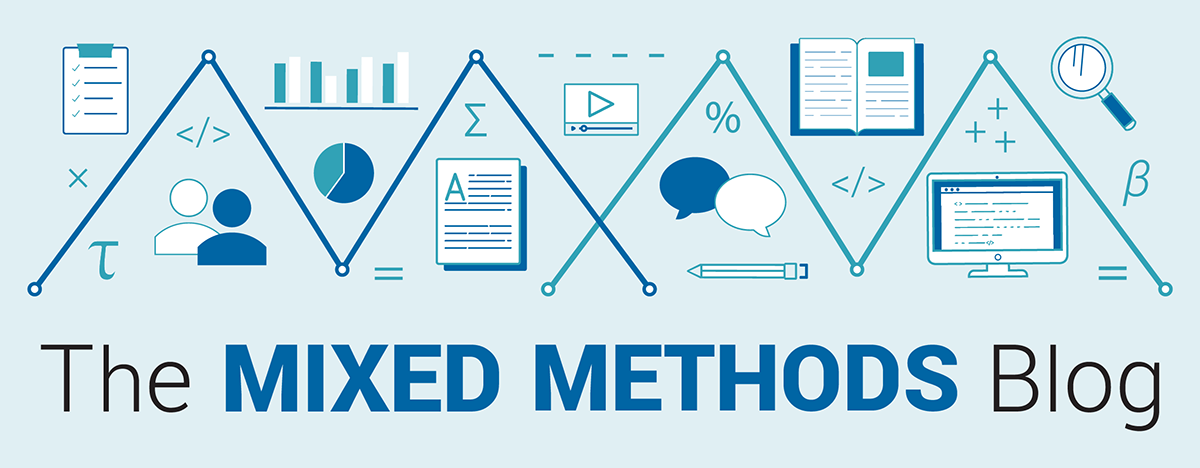The Mixed Methods Blog
Ask-Connect-Inspire-Plan: How to Reimagine Onboarding into a Program of Study

By Hana Lahr and Davis Jenkins*
Thinking back, what helped you decide on your college major? Maybe it was an engaging course, a helpful professor, or an advisor who helped you connect your interests with a field of study and career. Whatever or whoever it was, can you imagine how much more difficult the decision would have been without this support and guidance?
Unfortunately, that’s the reality for many community college students, who receive little support to explore and choose a program of study. Students are often asked to pick a program on their application, and follow-up advising around programs and careers is sporadic. With so little guidance, it’s not surprising that a large percentage of community college students enroll in associate of arts or general studies degrees in their first term, while many others do not enroll in any program or degree. When students enroll in an associate of arts degree or remain undeclared, they are less likely to take courses that will prepare them for a job or transfer in a field of study. Moreover, taking courses in a program of study—especially when they are well taught—can help students gain early momentum, which CCRC research indicates improves students’ likelihood of completing a degree. The effects of gaining more credits in the first year and generating early momentum are even more impactful for students of color and low-income students.
To help more students gain early momentum, community colleges need to reimagine new student onboarding with a focus on helping students enter a program of study aligned with their interests, strengths, and aspirations. We conceive of “onboarding” as a process that may take students’ entire first year: It starts before a student even enrolls and extends until they have chosen a program direction, passed program foundation courses, and created an educational plan. The goal is to help students choose a program of study; connect with a community of faculty, students, and others with similar interests; take a course that “lights their fire” for learning; and build a full-program educational plan that shows the courses and timeline for completion. We call this the “Ask-Connect-Inspire-Plan” framework. It is based on our research with almost 120 community colleges across the country that are implementing guided pathways reforms. Here, we describe the program onboarding model and how it can support students to choose and enter a program and community of like-minded peers and faculty.
Ask
| From Conventional Practice | To Program Onboarding |
|---|---|
| Academic and career exploration assistance is mainly limited to information on websites and self-directed search. | Every student is asked about their interests, strengths, and aspirations and is guided to programs and people at the college with similar interests. |
During the Ask phase, every student is asked about their interests, strengths, and aspirations by advisors or admissions counselors. Their answers serve as a starting point for other conversations with advisors and faculty about what programs would enable them to pursue their interests and goals. Typically, students are encouraged to consult the college website, take a career assessment, and generally find their own way into a major, so engaging all students from the start in these conversations is a marked shift. Further, discussing possible academic and career paths—including those students might not be aware of—increases the chances that students will choose a direction that is a good fit for them.
Connect
| From Conventional Practice | To Program Onboarding |
|---|---|
| Students are expected to forge relationships in their field independently. | From the start, colleges organize opportunities for all students to meet with faculty, students, alumni, and employers in fields of interest to them. |
We know from the research by Vincent Tinto and others how critical academic and social engagement is to student commitment and success. Yet, very few community college students are purposefully engaged by the college or helped to feel like they belong there. In the conventional model, students are expected to reach out to faculty or others and to initiate these relationships on their own. In our program onboarding model and as a follow-up to the “ask” stage of the process, students are introduced to faculty, students, and others with whom they share interests. At the same time, faculty and program area personnel actively reach out to students beginning in orientation through activities designed to help expand students’ understanding of academic and career opportunities in their fields (including liberal arts and sciences) and to recruit students who share interests. These recruitment efforts, together with network building among students who have chosen a program area, can help students forge connections that research shows are critical for motivating them to complete their programs and open opportunities for employment and further education.
Inspire
| From Conventional Practice | To Program Onboarding |
|---|---|
| Students spend the first term/ year completing developmental and general education prerequisites. | Every student takes at least one course in term 1 on topics of interest that "light their fire” for learning. |
An added benefit of talking to students and learning about their interests and goals is that advisors, admissions counselors, and faculty can help to guide students into courses that will “light their fire” for learning. Our research shows that in many colleges, students' first-term schedules often include developmental education and general education survey courses. These courses do little to help educate students about academic and career opportunities and are often seen as something students merely have to get out of the way. Research suggests that students who take a well-taught course in a topic of interest are more likely to persist in their programs, even in challenging fields such as STEM. However, because many students leave after their first term and nearly half of students never return for their second year, it’s critical to provide students with well-taught and engaging courses early. For that to happen, faculty teaching those courses need support to strengthen their teaching in ways that “light the fire ” for learning among students who may never have experienced good teaching.
Plan
| From Conventional Practice | To Program Onboarding |
|---|---|
| Some students are helped to develop first-semester schedules, followed by self-guided navigation. | Colleges help every student to develop a full-program plan used to schedule classes and monitor progress. |
Finally, every student should be helped to develop a full-program educational plan by the end of their first term. The plan should show students what courses they need to take and in what timeframe to complete a program aligned with their goals for employment and further education. In focus groups, students often share that they worry about taking courses that won’t apply to their degrees and that having a plan that has been co-created with an advisor or faculty member is reassuring and motivating. Students may change their plans over time, but having a preliminary plan will enable them to see the implications of any changes to what they need to take and the time and cost to completion. Colleges can also use these plans to monitor students’ progress and ensure that the courses students need to progress are scheduled when they need them.
* * *
The Ask-Connect-Inspire-Plan framework represents a new way of onboarding students to college, one that focuses on helping students build momentum into a program from the start, rather than assessing college readiness and creating a first-term schedule. Research suggests that shaping the new student experience through the Ask-Connect-Inspire-Plan framework will benefit students generally, but it is likely to be especially beneficial to students who have not been served well by the education system in the past and may not have had guidance and support to explore their interest and develop a plan from family and peers. Thus, rethinking the new student experience using the program onboarding model is important not only to increase student persistence, but also to ensure more equitable outcomes.
These practices, like all guided pathways reforms, are not a one-size fits all model. They will need to be personalized to every student, based on their interests and circumstances. However, in order to personalize these practices to all students, colleges need to start with the first practice: Ask. Initiating conversations with students will provide colleges with important information that can be used to tailor these experiences and ensure that every student is receiving the support they need to choose and enter a program of study aligned with their goals and interests.
Hana Lahr is a senior research associate and program lead at CCRC. Davis Jenkins is a senior research scholar at CCRC.
*The Ask-Connect-Inspire-Plan framework was developed by members of the CCRC guided pathways team, including Davis Jenkins, Hana Lahr, Amy Brown, Maggie Fay, Serena Klempin, Umika Kumar, and Amy Mazzariello. We are grateful to Al Solano, founder of the Continuous Learning Institute, and Mark Akiyama, Interim Dean of Guided Pathways and Special Projects at Diablo Valley College for their thought partnership and feedback on this framework.




